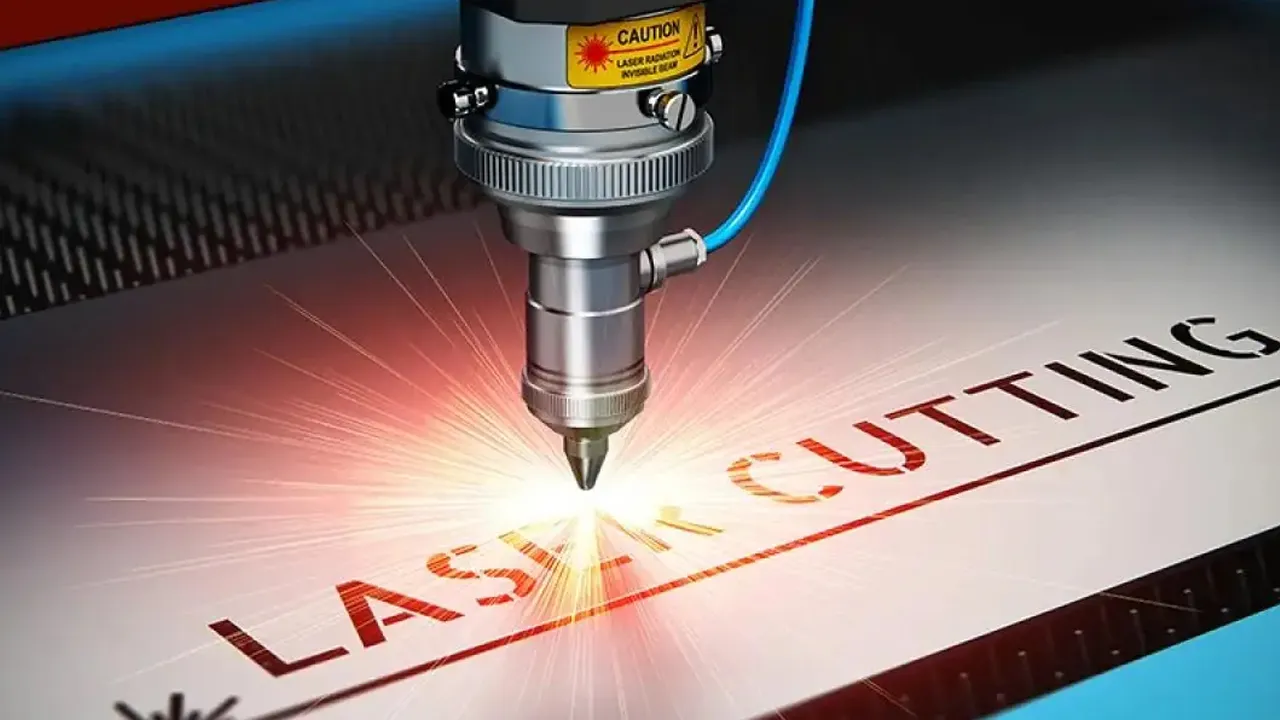29 May 2024

Laser cutting employs a high-power laser directed through optics and computer numerical control (CNC) to shape materials. A motion control system follows a CNC or G-code pattern for precise cutting. The laser beam, created by lasing materials stimulated through electrical discharges or lamps, is amplified until it escapes as coherent monochromatic light. This light, focused by mirrors or fiber optics through a lens, intensifies at the work area. With a diameter typically under 0.0125 inches (0.32 mm), the laser creates a narrow kerf width, allowing intricate cuts. A piercing process initiates cutting away from material edges, often taking seconds to penetrate thick sheets. The advantages of laser cutting over alternative methods include: As we explore further, we find different kinds of laser cutting machines, each with its own special purpose: CO2 Laser Cutting Machines: Ideal for cutting and engraving non-metal materials like wood, acrylic, and plastic. Fiber Laser Cutting Machines: Designed for cutting metal materials, particularly stainless steel, aluminum, and brass, with high precision and speed. Crystal Laser Cutting Machines: Suited for precise cutting of brittle materials like glass, ceramics, and semiconductors. YAG Laser Cutting Machines: Used for cutting thicker metal materials and for applications requiring deeper penetration, such as welding and drilling. Laser cutting technology has revolutionized modern manufacturing processes, offering precision, versatility, and efficiency like never before. In today's highly competitive industrial landscape, laser cutting plays a pivotal role in various sectors, from automotive and aerospace to electronics and medical devices. Its importance stems from several key factors:machines Laser cutting manufacturers achieve intricate and precise cuts, even in complex shapes and tight tolerances. This level of precision is crucial for producing high-quality components and parts that meet the exact specifications required in modern manufacturing. Laser cutting machines in UAE can work with a wide range of materials, including metals, plastics, wood, and ceramics. This versatility allows manufacturers to produce diverse products and components, from simple prototypes to intricate designs, with ease and efficiency. Laser cutting offers unparalleled speed and efficiency, resulting in faster production cycles and reduced lead times. Additionally, the minimal material wastage associated with laser cutting contributes to cost savings for manufacturers, making it a cost-effective solution for large-scale production. Laser cutting can be seamlessly integrated into automated manufacturing processes, enhancing productivity and streamlining workflows. With the advancement of Industry 4.0 technologies, laser cutting systems can communicate and coordinate with other machinery, enabling fully automated production lines. Laser cutting machines in UAE is known for its eco-friendly characteristics, such as reduced energy consumption and emissions compared to traditional cutting methods. As sustainability becomes increasingly important in manufacturing, laser cutting offers an environmentally responsible solution for reducing the industry's carbon footprint. Laser cutting machines have become indispensable tools in modern manufacturing, offering unmatched precision, versatility, and efficiency. These machines enable manufacturers to produce high-quality components and intricate designs while optimizing production cycles and minimizing material waste. The ability to seamlessly integrate with automated processes and reduce environmental impact further underscores the significance of laser cutting in today's industrial landscape. As technology continues to advance, laser cutting will undoubtedly play an even more critical role in shaping the future of manufacturing. Want to know more? Check out our blog on "Types of Laser Cutting Machines".Key Advantages of Laser Cutting over Traditional Methods
Variations in Laser Cutting Equipment
Importance of Laser Cutting in Modern Manufacturing
Precision and Accuracy:
Versatility and Flexibility:
Efficiency and Cost-Effectiveness:
Automation and Integration:
Environmental Impact:
Conclusion